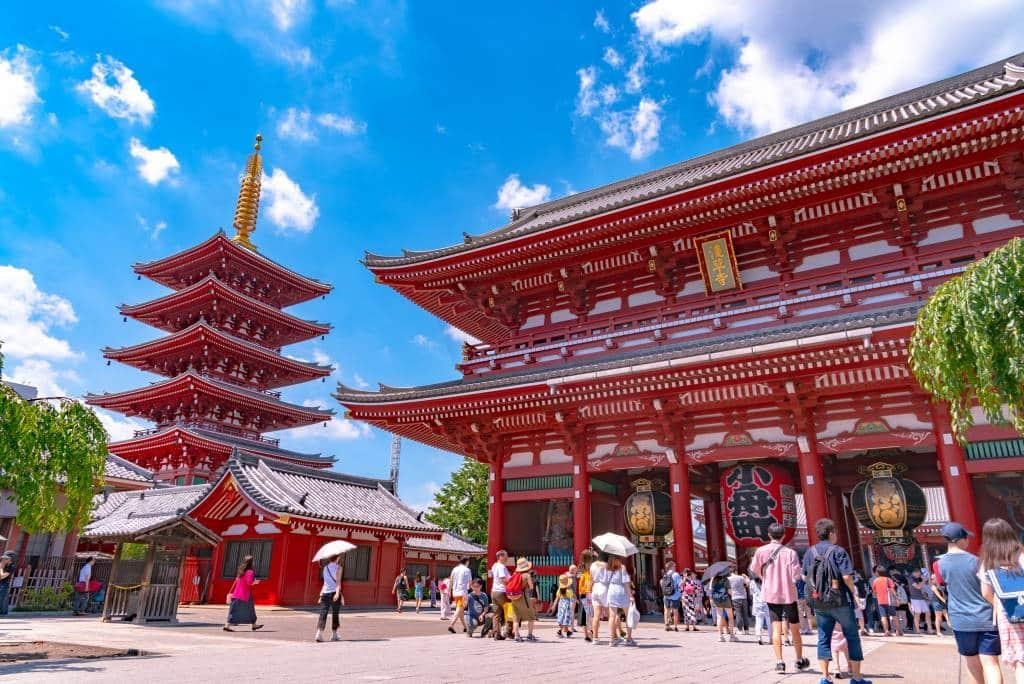Tokyo, a bustling metropolis known for its towering skyscrapers and fast-paced lifestyle, is also home to a rich tapestry of spiritual heritage found in its numerous temples. Amidst the urban noise and relentless energy, these sacred spaces offer a serene escape, inviting both locals and visitors on a profound spiritual journey. From the iconic Senso-ji in Asakusa, with its vibrant festivals and traditional rituals, to the tranquil gardens of Nezu Shrine, each temple encapsulates a unique blend of history, architecture, and cultural importance. This article aims to explore the diverse spiritual landscapes of TokyoS temples, shedding light on thier historical contexts and the personal connections people forge within these hallowed grounds. Whether you seek solace, reflection, or simply a deeper understanding of Japanese traditions, the temples of Tokyo serve as beacons of peace and community, guiding us on a journey that transcends the mundane and invites a moment of introspection amidst the chaos of city life. Join us as we uncover the spiritual essence hidden within this dynamic urban environment.
Discovering the Tranquility of Senso-ji Temple
As you approach the iconic Senso-ji Temple, the air is charged with a sense of reverence and peace that envelops all who enter. Nestled in the historical Asakusa district, this ancient sanctuary serves as a spiritual refuge amid the bustling city. the aroma of incense wafts through the air, harmonizing with the gentle sounds of worshippers praying and tourists marveling at the majestic architecture. Stroll through the vibrant Nakamise Street, where traditional treats and artisan crafts beckon you to pause, if only for a moment. Here, visitors can embrace the essence of Japan through a delightful array of offerings, such as:
- Senbei: delicious rice crackers that evoke nostalgia with every crunch.
- Manju: sweet buns filled with red bean paste, symbolizing warmth and comfort.
- Ukiyo-e prints: vibrant art pieces that capture the fleeting beauty of life.
Upon reaching the temple’s main hall, the serenity deepens, as visitors engage in the time-honored tradition of purification at the temizuya fountain. This ritual, involving washing hands and mouth, symbolizes the cleansing of one’s spirit. The ornate entryway, known as Kaminarimon, is a striking juxtaposition of tradition and culture, adorned with a giant red lantern that serves as a beacon of hope for many pilgrims. The tranquil surroundings encourage guests to reflect, meditate, and leave behind their worldly worries. For those who seek further insight into the spiritual realm, the temple frequently enough hosts events such as:
| Date | Event |
|---|---|
| January 1 | New Year Celebration |
| July 10-14 | Asakusa Samba Carnival |
| November 3 | Jinja Matsuri (Shrine Festival) |
Visiting Senso-ji Temple isn’t just a journey through Japan’s religious heritage; it’s an invitation to experience a tranquil interlude. Each corner of this sacred space offers a moment of reflection and connection with something greater, reminding all who visit of the beauty of spirituality. Whether you’re a devoted seeker or a casual traveler, the temple provides an possibility to cultivate inner peace while exploring a central piece of Tokyo’s rich tapestry, radiating an allure that draws travelers from all over the globe to discover their own tranquility at this remarkable site.
Exploring the Rich History of Meiji Shrine
Meiji shrine,nestled within a lush forested area in the heart of tokyo,is a profound testament to Japan’s rich cultural heritage and the significance of Shinto beliefs. Dedicated to Emperor Meiji and Empress Shoken, this revered shrine was established in 1920, following the emperor’s death, to honor their contributions to Japan’s modernization during the Meiji Era (1868-1912). Visitors are captivated by its tranquil ambiance marked by grand torii gates, beautifully manicured gardens, and traditional architecture that reflect the simplicity and elegance of Shinto aesthetics. The shrine is not only a pilgrimage site but also a place where numerous ceremonial events, including weddings, are held, reinforcing its cultural importance. A stroll through the 2-mile-long approach to the shrine is an experience in itself, as you are enveloped by the towering trees, some of wich are over 100 years old, creating a serene atmosphere that transports you away from the city’s hustle and bustle.
- Architecture: Features a unique blend of traditional Shinto and modern styles.
- Nature: home to over 365 species of trees, providing a serene escape.
- Festivals: Hosts various cultural events such as the Meiji Jingu sports Festival.
- Cultural Significance: A symbol of Japan’s transition to modernity while preserving tradition.
| Feature | Description |
|---|---|
| Construction Year | 1920 |
| area | 700,000 square meters |
| Visitors per Year | Over 3 million |
Yet, what truly makes Meiji shrine special is its ability to blend ancient tradition with contemporary life, embodying the spirit of resilience and endurance. Whether you are a traveler seeking solace or a spiritual seeker on a journey to connect with Japan’s history, this sacred space beckons you to explore its depths, nourish your soul, and embrace the serene rituals that have been practiced for generations.Discovering meiji Shrine is more than just a visit; it’s a spiritual journey woven into the fabric of Tokyo itself, making it a highlight of any Gezify travel itinerary.
exploring the temples of Tokyo offers not just a glimpse into Japan’s spiritual heritage but also an invitation to reflect on our own inner journeys. Each temple, with its unique architecture and tranquil surroundings, serves as a sanctuary amidst the city’s hustle and bustle.Whether you seek solace, inspiration, or a deeper connection to culture and history, these sacred spaces provide a profound experience for all visitors.As you traverse the paths of these spiritual havens,may you carry a piece of their serenity and wisdom with you,enriching your own journey through life.
